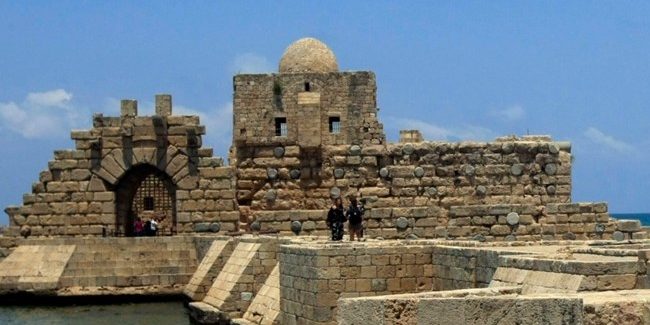SIDON, Lebanon: Sidon’s Sea Castle is said to have stood for almost 800 years. Built by crusaders, destroyed by the Mamluks and restored by Fakhreddine, the castle, as well as the city that surrounds it, are steeped in history. What if, instead of learning about this history in textbooks, children could go back in time and see it for themselves? A team of tech experts and academics has a plan to bring this one step closer to reality. The Virtual Experience Company, together with researchers from the universities of Cambridge and Essex in the United Kingdom, is set to create a virtual reality model of the Sea Castle.
“The idea is that we’ll create a 3D interactive model of the castle as it is now,” Mike Gogan, the CEO of the Virtual Experience Company, told The Daily Star.
By donning a VR headset, children will be able to explore the castle through a simulation and connect with information about its history.
The VR technology the team will use has been part of the gaming market for a while, immersing players in computer-generated environments where they can navigate simulations and interact with objects. To create the simulation of the Sea Castle, Gogan and his team will take laser scans of the site and combine them with photos and photogrammetric impressions, which use photography to map distances between structures.
As children explore the VR model, videos will show interviews with local people about the history of the castle. There will also be tasks for children to complete, prompting them to inquire into Sidon’s heritage for themselves.
“It’ll be like a time machine in a way, to show Saida today and then show how we got to what we have now,” said Paola Di Giuseppantonio Di Franco, a researcher at Essex University who is on the team.
Through the interview content, she said she hoped the VR technology would bring a human element to Sidon’s story. “We really want to focus on the people side of history, on the human aspect of the place.
“The virtual model is great for helping kids engage with this,” she told The Daily Star. The Sea Castle is a good site to use the VR tech on, she explained, because of the “richness of stories in Saida that need to be told.”
“There are different layers of culture there, crafts that are disappearing and practices that are disappearing little by little,” she said.
The team hopes that the VR model can bring these elements of local culture to life for students.
Lebanon isn’t the first country in which Gogan’s team has worked. Across 20 years, the team has worked on the El Jem Amphitheatre in Tunisia, Westminster Hall in London and the Bahla Fort in Oman. Last year, the team created a 3D virtual tour of Ksar Said, a 19th-century palace in Tunisia.
Speaking at the Lebanese American University about the Ksar Said project, Mark Winterbottom, a science education lecturer at Cambridge, said the team found that children were more likely to interact with historical information in the simulation than they were with printed information in the museum.
The VR also helped renew interest in the Ksar Said palace for children who were already familiar with it, Winterbottom said.
“Being able to experience a reconstructed Roman site in VR made it easier for children to understand the ruins of the site when they visited in real life,” he added.
Is the team concerned that access to the virtual model will discourage real-life visits to Sidon’s Sea Castle?
“All the evidence suggests that the more familiar people are with historic sites, the more they want to visit them in real life.”
This is a phenomenon seen at tourist sites around the world, he said. “When people go to Paris for the first time, they go to the Eiffel Tower. When people go to India they want to see the Taj Mahal.”
Di Giuseppantonio Di Franco agreed, suggesting VR models could stimulate an interest in conserving heritage sites too. “If you know a site and fall in love with it, first of all you want to see it to have a material engagement with it, and then after that you want to protect it,” she said.
“There’s nothing to be scared of with these technologies,” she added.
“They only add value to real-life heritage.”

